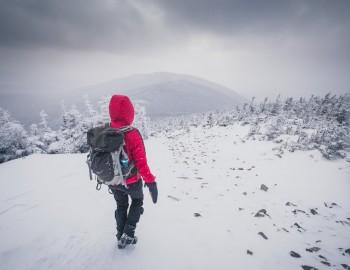Treat yourself to massages, body treatments, Nordic baths and other sensory delights.


THINGS TO DO
Your Townships adventure starts here.
Spa & Wellness
Treat yourself to massages, body treatments, Nordic baths and other sensory delights.
Arts, Culture & Heritage
Let your imagination run free at galleries, theatres, museums and workshops.
Shopping
Scour our markets, boutiques and other hidden gems to score incredible finds.
Restaurants
All are sure to please even the most discerning of palates. Bon appétit!
Events
Discover our cultural vitality with a wide range of special events.
Skiing
To each mountain its experience! Skiing or snowboarding, you will love hitting the slopes, whichever the ski resort you will vote for!
Snowshoeing
Explore our great outdoor spaces at your own beat. Let yourself be charmed by our landscapes. And breathe!
Cross-country Skiing
Cross-country skiing in the Townships … at your pace and your level!
Fatbike
Discover our numerous trails as you enjoy pedalling on the snow.
Where to stay
Lodging options to suit any taste and budget.
Hotels & Country Inns
Stunning locations and outstanding service come together for a bliss-inducing stay.
Bed & Breakfasts
Get up close and personal with life in the Townships.
Off the Beaten Path
Think outside the box with out of the ordinary accommodations.
Cottages & Condos
Custom comfort near the city or in nature.
Campgrounds
Abundant amenities in the heart of nature.
Vacation Centres
Kick back and relax as a family with all-inclusive vacation options.
Other Types of Lodging
Experience something different by choosing unique lodging.
Lodgings with Spa Options
Plan a stay in an accommodation with a private spa or a treatment center. Relaxation guaranteed!
Hikers Welcome
If you, like thousands of visitors annually, plan on hiking in the region, know that your efforts will be rewarded by our world-class hospitality.
Pet Friendly
Don’t want to leave your four-legged friend behind? Book a stay in some of the region’s many dog-friendly digs and you won’t have to.
The Townships
The Townships possess a rich heritage that you will discover everywhere on its nine territories, in its towns and villages, its Coeurs villageois, etc.
Not to be missed
What is it that draws visitors to the region, year after year? Find out here :
Cœurs villageois
Visit our Cœurs villageois – charming communities that truly characterize the spirit of our region.
Towns and villages
Explore our lively, welcoming towns and villages with their heritage architecture and fascinating histories.
Nine territories to discover
Each territory has a distinct personality and a wealth of hidden treasures just waiting to be discovered!
The Townships at a glance
Here’s a glimpse of the region, a few historical notions, and numbers.
Tourist routes
Hit the road! The region has several tourist routes designed around different themes – heritage, scenic landscapes, wine….
National and regional parks
Four national and two regional parks – an outdoor paradise in the fresh air, each and every one!
Taste the townships
Here, in so many ways, you’ll enjoy all kinds of gastronomical experiences! When you discover our unique products and our highly renowned tables, you’ll love us forever!
Restaurants
Every time you sit down at one of our tables, you’ll experience a truly special moment. Savour it!
Cafés de village
Visit our Cafés de Village and discover each one’s specialties while meeting the most welcoming and friendly people.
Créateurs de Saveurs Products
You can rely on our food producers who put as much love as delicious flavours into everything they plant and produce.
Vineyards
The Route des vins de Brome-Missisquoi, the Route des vins de l’Estrie, and about twenty other vineyards… The Townships region proudly honours its title of being the first wine region of Quebec.
Microbreweries
The region counts more than twenty microbreweries! Just like the people who run them, each one has established their own strong, unique personality and … extremely inviting character!
Cheese Factories & Dairy Producers
goat’s milk… Here you’ll savour rich artisanal cheeses. Some you already know, many others you’ll enjoy discovering.
Sugar shacks
Enjoy a traditional meal and maple taffy on snow.
Restaurants Saveurs Cantons-de-l’Est
These restaurants prioritize local producers and offer dishes made with regional ingredients, providing an authentic experience of the Eastern Township terroir.
Foodie’s Maps
Brasseurs des Cantons and Têtes fromagères are two gastronomical circuits highlighting our microbreweries and cheese factories.
Gourmet Itineraries
Plan your stay by offering yourself a wealth of flavours. Consult our getaway ideas.
Weekend and Trip Ideas
Discover our activities suggestions, getaway ideas and itineraries in the Townships.
Family Outings
Find loads of ideas for memorable family outings!
Romantic Getaways
Outings, restaurants, spas, weekend ideas… Suggestions for spending some precious moments together.
Outdoor Activities
Snowshoeing, skiing, fatbiking, tube sliding... Without a doubt, all outdoor enthusiasts are sure to find something to do here!
Wellness Experiences and Spas
Let us help you take care of yourself.
Itineraries
Whether for two, with your family or with friends, here you will find a ton of suggestions for planning perfect getaways!
Blogs and articles
Our collaborators have tested several different adventures … and have approved!
Townships Ambassadors
Meet inspiring locals, discover their favourite spots and get their best insider tips!
Coeur villageois
Visit our Cœurs villageois – charming communities that truly characterize the spirit of our region.
Towns and Villages
Explore our lively, welcoming towns and villages with their heritage architecture and fascinating histories.
Guide and Maps
View our guide and maps online or order your free copies.

Updated on May 6, 2025
Although hiking is probably the most democratic activity in the world, it requires that we respect some basic rules so we will always be able to enjoy our treks!
In the Eastern Townships, most trails run through private lands. Landowners sign an agreement with the trail managers in order to obtain the right to pass through their properties. By remembering to stay on the trails, you will respect these rights of way. Our contribution to maintaining good relationships between both parties ensures that the trails will remain open and accessible.
Take all your waste with you – including tissues, fruit peels, and packaging. The goal is simple: leave no trace of your visit. By keeping natural environments clean, we protect both wildlife, plants, and the experience of future visitors.
Since hunting periods vary from one site to another, it is strongly recommended to respect the dates on which circulation is prohibited on certain trails. In the descriptive files of each trail, you’ll find the necessary information concerning hunting periods.
The amount of water and food you’ll need is determined according to distance and weather. Normally, you should plan to bring about 1.5 litres of water per person.
If you’re planning to hike alone, especially over a long-distance, you should notify people about your destination and itinerary. If there’s a welcome centre at the trail head, register your information.
Your feet should be your primary concern. For an enjoyable outing, you must, first of all, have the proper footwear, boots or shoes adapted to the type of trail you’ll be walking on. Ask for expert advice in a specialized store about which footwear is best for your style of hiking.
Multilayering should always be privileged (at least 3 layers of clothing). Why? Simply because this allows for an appropriate and rapid adaptation to any temperature variations by combining specific garments selected according to their properties. Each layer has a precise function:
The first layer leaves your skin dry by evacuating body sweat outwards. It’s usually made with synthetic fibres.
The second layer allows humidity to escape while preserving your body heat. It’s usually made with wool fleece.

Nature, sports and outdoor activities
The Highest Summits of the Townships
Filters
X






